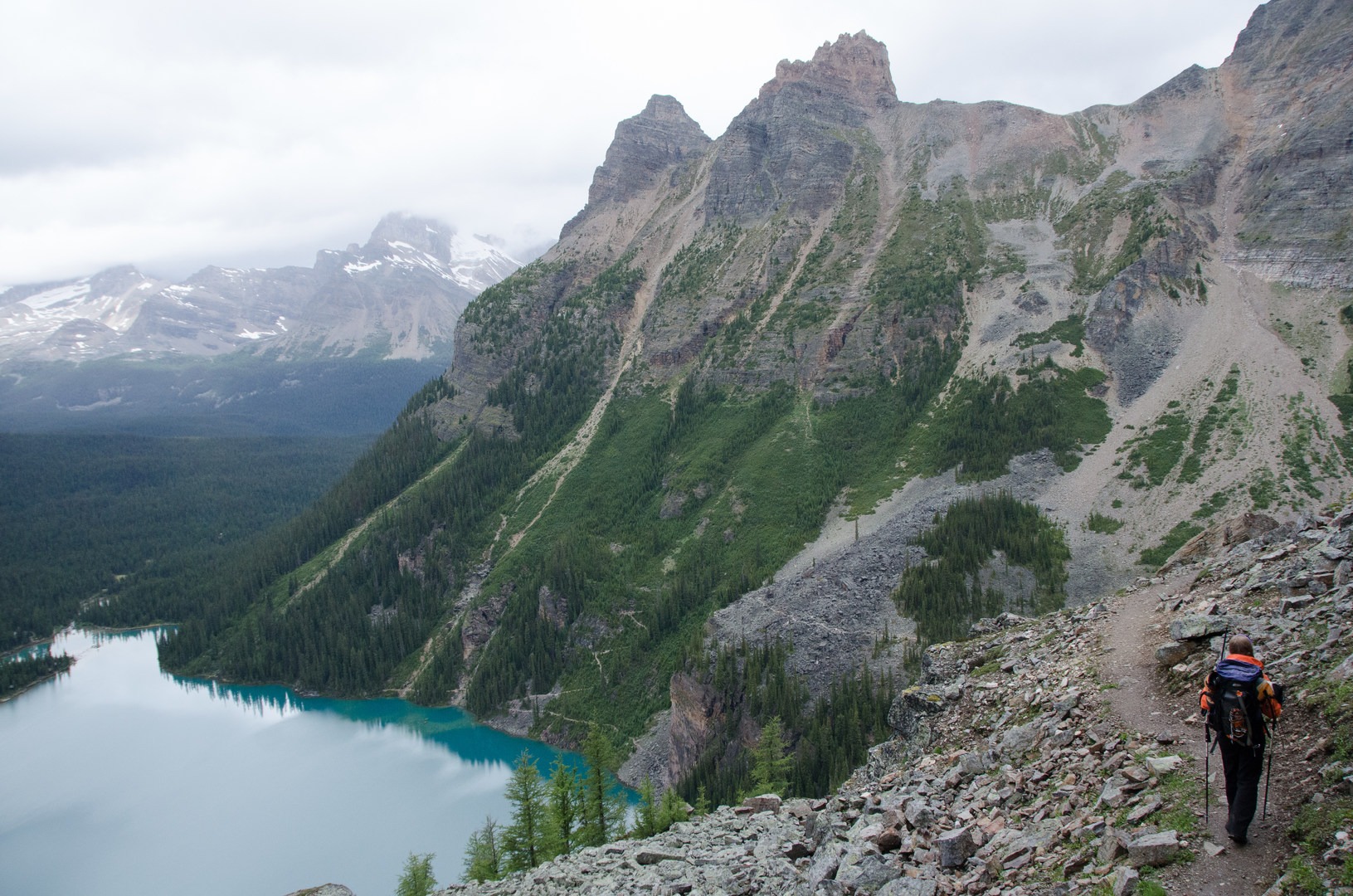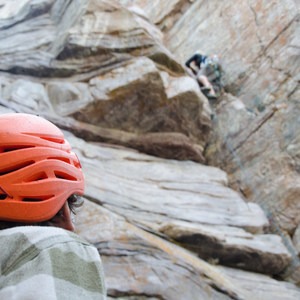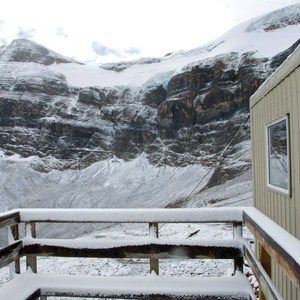You are here
The Yukness Ledges are a terrific variation of one of the many hikes in the Lake O’Hara area. This route offers fabulous views and a breathtaking hike along a break in otherwise nearly vertical cliffs. Mountain goats are common sights, and the alpine meadows that make the approach are some of the most beautiful in the Canadian Rockies.
Logistics to get here are complicated and almost always frustrating. Because it is a very fragile alpine ecosystem, and to preserve the road to the area, access is restricted to several school buses that drive up and down the road delivering hikers to the top. The only way to get a spot on the bus for day hikes is through a lottery. They begin loading people up at 8 a.m., and the last ride out is 4 p.m. Be sure to plan your day accordingly.
There is a lodge, an ACC hut, and a campsite at the bus drop-off point. These can be booked for overnight stays. Much like the trails, they often book up a year or so in advance. At the time of writing it is permissible to hike up the 11-kilometer access road. Cycling is not permitted.
This is an alpine trail (above treeline), so expect alpine conditions. In the Rockies that means it can go from brilliant sunshine to pouring rain in 15 minutes. In addition to the 10 Essentials, hiking poles are recommended if you have weaker knees. A paper map of the area is also a good idea. Gemtrek is a mediocre option, but it is accurate. Printouts from Gaia and All Trails are better, with more trails shown. Bring at least one extra warm layer. It can get very cold quickly, and the nights can drop to single digits (Celsius) or even past freezing during the summer months.
The route
Lake O’Hara area has a multitude of trails, and the number of trails disappearing off in every direction can be a bit confusing. For this reason, a trail map is essential. Phone signal is non-existent so be sure to bring paper maps to complement a predownloaded map. Luckily, the signage and distances are top notch. One more note: O’Hara is a VERY fragile ecosystem. DO NOT WALK OFF THE TRAIL. This cannot be stressed enough. This is a highly trafficked area, and there are many conservationists who believe that the area needs a couple of “recovery seasons” of no access to the public. Accessing this area is a privilege, so respect the rules so that you and other people can continue to enjoy this alpine paradise.
The trail begins by following the signs for the Elizabeth Parker Hut/West Opabin Trail. Follow this past Opabin Lake and uphill along well crafted stone steps. Past this you will head southeast toward Hungabee Lake. At Hungabee Lake you will see the trail and signs that make their way north and westward along the flanks of Hungabee. There is a brief but steep hike to gain the ledges proper.
The route here gets pretty subjective. Some will find it very scary. In places the trail norrows to less than a meter in width, with loose rocks and gravel. At no point do you need your hands, and it remains hiking the whole way along, but those sensitive to height exposure will be challenged. Others will cruise over this ample trail and not notice.
The ledges are beautiful, though. You'll have a superb view of the whole valley, with Lake O’Hara, Opabin and Oesa bellow. Huber, Victoria, and Schaeffer tower over the valley. It is an awe-inspiring sight, to be sure. As you follow the ledges you'll arrive at the broad slabs where it widens, and you'll find yourself at Lake Oesa. From here you can descend back to Lake O’hara and pass the beautiful alpine meadows, gorgeous waterfalls, and stunning emerald waters of Lake O’hara.
Poles are nice to have, because the trail descends steeply before flattening out and following the shores of Lake O’Hara, ending back right where you started.
Logistics + Planning
Current Weather: Powered by Dark Sky


































Comments
Sign In and share them.